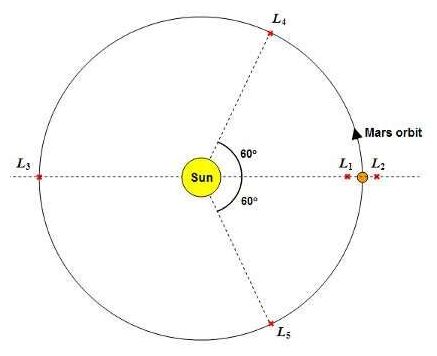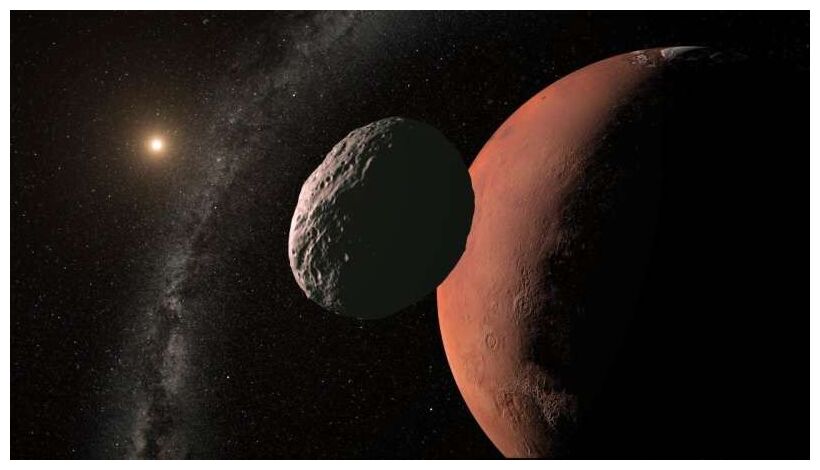With this new member, the group of Trojans that accompany Mars has increased in number to 17. But it shows differences in its orbit and chemical composition which may indicate that it is a captured asteroid, of a primitive type. The results are published in Astronomy & Astrophysics.
A team from the Instituto de Astrofísica de Canarias (IAC) and the Universidad Complutense de Madrid (UCM) has observed and described for the first time the object 2023 FW14, a Trojan asteroid that shares its orbit with Mars. After Jupiter, the red planet has the largest number of known Trojans, totalling 17 with this new identification.
The Trojan asteroids are small bodies in the solar system that share the orbit of a planet, occupying one of the points of stable equilibrium called the Lagrange points, situated 60º in front of (L4) and 60º behind (L5) the planet.
Although the majority of the Martian asteroids seem to have accompanied the planet since the epoch of its formation, 2023 FW14 arrived at its Trojan trajectory around a million years ago, and it may leave it in some 10 million years, according to the numerical results obtained by the study.
"While the orbital evolution of the 16 previously known Trojans shows long-term stability, the orbit of the new one is not stable," explains Raul de la Fuente Marcos, a researcher in the Department of Earth Science and Astrophysics at the UCM, who has led the study. "There are two possibilities for its origin: it could be a fragment of the Trojan 1999 UJ7, or it may have been captured from the population of asteroids close to the Earth that cross the orbit of Mars."

"Although the spectrum of 2023 FW14 obtained with the GTC is somewhat different from that of the other L4 Trojan 1999 UJ7, both of them belong to the same composition group, they are asteroids of a primitive type, in contrast to the L5 Trojans, all of them rocky and rich in silicates," says Julia de León, an IAC researcher, and co-author of the article.
Increasing the number of known Martian Trojans allows researchers to deepen their understanding of these objects, whose existence was first predicted from mathematical calculations. "Studying real Trojans rather than only those predicted mathematically allows us to test the reliability of our theoretical models," concludes de la Fuente Marcos.




Reader Comments
Until you learn about Lagrange points, gravity seems simple: it's just a sort of pull that affects things that are nearby directly, right? But these seemingly emergent "nodes" give me the impression that orbits are involved in an almost "crystalline" structure of interactions and sub-interactions.
Lagrange points are the most obvious, maybe, but what other peculiar nodes and phenomena emerge when you look at the interactions of more than two bodies? and are there "sub-Lagrange" points, created for instance when an object orbits a Lagrange point?
I get the image of all the bodies in the solar system generating a constantly shifting, dynamic "crystal-like" pattern of gravitational (or gravity-like, at least) nodes, some of which are more permanent (like these Lagrange points) and some of which emerge and collapse based on locations of objects.
Or... wild thought. What if the objects "emerge and collapse" based on the universal patterns of gravity itself? Or, more friendly to my mind, there is a symmetry here: neither the gravity nor the objects are "cause" of the other, there's a symmetry...
Just ranging out into free association at this point. Learning about these orbital nodes just triggers a sense of awe and curiosity for me.
del mismo modo que la circunferencia es un tipo particular de elipse con sus 2 ejes de simetría con un mismo centro ... pudiera ser que los puntos de Lagrange sean cuestiones similares a otro level ...